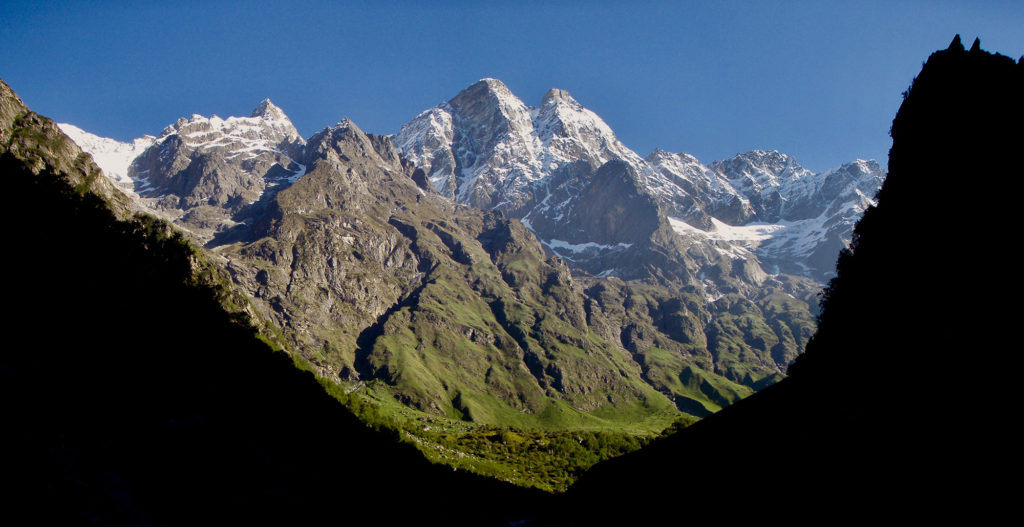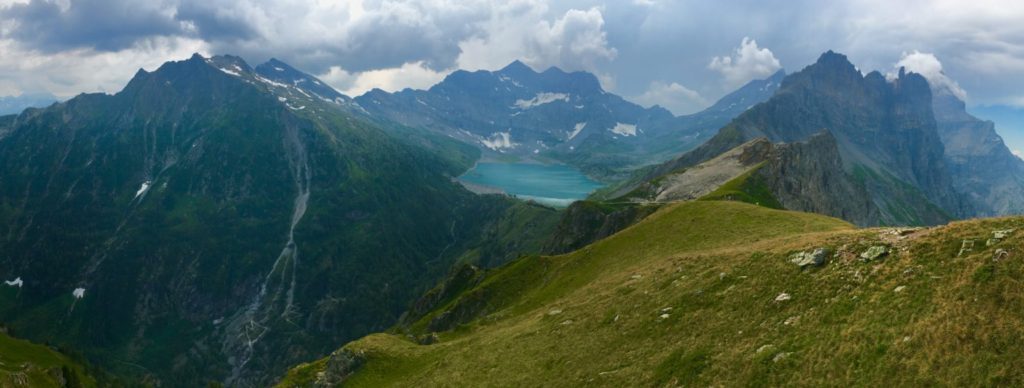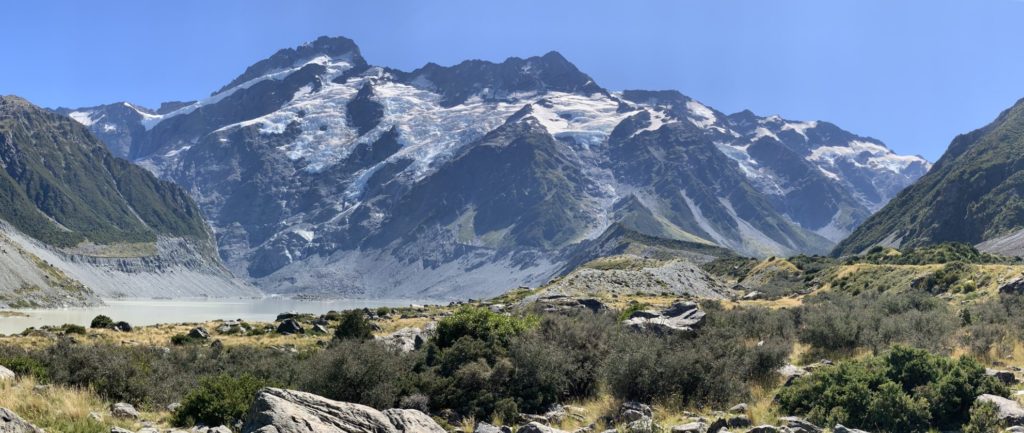Orogeny is the formation of mountain systems during tectonic convergence. Classic orogenic belts of the Cenozoic include the Alps of Europe, Southern Alps of New Zealand, and the Himalaya. The massive chains of mountains form natural laboratories for us to query an array of geologic processes from midcrustal igneous and metamorphic petrology to exhumation and erosion.
 The Valley of Flowers, Garhwal Himalaya, India
The Valley of Flowers, Garhwal Himalaya, India
Understanding the orogenic processes of the Cenozoic provide a baseline on which we can compare orogeny in deep time. The principles of uniformitarianism dictate that the physical processes that are seen to occur today must have been happening in the geologic past. However, it is important to note the differences between substantive uniformitarianism and methodological uniformitarianism (Gould, 1965).
 The Swiss Alps
The Swiss Alps
Substantive uniformitarianism postulates that geologic processes have not changed through geologic time (uniformity of rates or material conditions) whereas methodological uniformitarianism asserts the fixity of natural laws in both spatial and temporal contexts. Unfortunately, these two terms are often conflated. Where substantive uniformitarianism falls short is in cases where secular change is observed in geologic phenomena (e.g., changes in geochemical proxies of ambient mantle temperature through time). Methodological uniformitarianism effectively proposed that the law of nature (or physics) are constant but allows for changes in the boundary conditions (rates, conditions, etc.).
 The Southern Alps, New Zealand
The Southern Alps, New Zealand
Orogens in deep time and especially in the Precambrian often exhibit characteristics that are fundamentally different from Cenozoic orogens. It is possible that the differences observed are not the product of secular change, but are simply differences in scale and preconditions of the orogenies.
Our work seeks to deconvolve the idiosyncrasies of orogenies from secular change that influences the style and magnitude of orogenesis. This research is currently being done around the work on orogenic belts and isotopic proxies of orogeny spanning 4.4 billion years around the world.
Related Publications
Spencer, C. J., Thomas, R. J., Roberts, N. M. W., Cawood, P. A., Millar, I., & Tapster, S. (2015). Crustal growth during island arc accretion and transcurrent deformation, Natal Metamorphic Province, South Africa: New isotopic constraints. Precambrian Research, 265, 203–217.
Spencer, C. J., Dyck, B., Mottram, C. M., Roberts, N. M. W., Yao, W. H., & Martin, E. L. (2019). Deconvolving the pre-Himalayan Indian margin – Tales of crustal growth and destruction. Geoscience Frontiers, 10(3), 863–872.
Spencer, C. J., Cawood, P. A., Hawkesworth, C. J., Prave, A. R., Roberts, N. M. W., Horstwood, M. S. A., & Whitehouse, M. J. (2015). Generation and preservation of continental crust in the Grenville Orogeny. Geoscience Frontiers, 6(3), 357–372.
Martin, E. L., Collins, W. J., & Spencer, C. J. (2020). Laurentian origin of the Cuyania suspect terrane, western Argentina, confirmed by Hf isotopes in zircon. Bulletin of the Geological Society of America, 132(1–2), 273–290.
Spencer, C. J., Roberts, N. M. W., & Santosh, M. (2017). Growth, destruction, and preservation of Earth’s continental crust. Earth-Science Reviews, 172(July), 87–106.
Nordsvan, A. R., Collins, W. J., Li, Z. X., Spencer, C. J., Pourteau, A., Withnall, I. W., Betts, P. G., & Volante, S. (2018). Laurentian crust in northeast Australia: Implications for the assembly of the supercontinent Nuna. Geology, 46(3), 251–254.
Spencer, C. J., Harris, R. A., & Dorais, M. J. (2012). The metamorphism and exhumation of the Himalayan metamorphic core , eastern Garhwal region , India. 31(February), 1–18.
Li, Z. X., Mitchell, R. N., Spencer, C. J., Ernst, R., Pisarevsky, S., Kirscher, U., & Murphy, J. B. (2019). Decoding Earth’s rhythms: Modulation of supercontinent cycles by longer superocean episodes. Precambrian Research, 323(January), 1–5.
Spencer, C. J., Murphy, J. B., Kirkland, C. L., Liu, Y., & Mitchell, R. N. (2018). A Palaeoproterozoic tectono-magmatic lull as a potential trigger for the supercontinent cycle. Nature Geoscience, 11(2), 97–101.